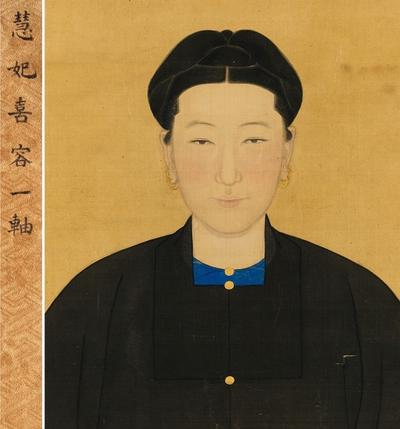
Consort Hui, Of The Bo'erjijite Clan
| Name | Consort Hui, Of The Bo'erjijite Clan |
| Title | Kangxi's consort, of Khitan-Mongol descent, royal nobility. |
| Gender | Female |
| Birthday | 1650-00-00 |
| nationality | — |
| Source | https://www.wikidata.org/wiki/Q7354493 |
| pptrace | View Family Tree |
| LastUpdate | 2025-10-27T06:01:30.628Z |
Introduction
Consort Hui, Borjigit, lived from the 17th century until May 30, 1670. She was a Mongolian of the Qing Dynasty and a noble lady consort of Emperor Kangxi. She hailed from the Left Wing of the Qi Front Banner of the Kerchin Banner, and was the granddaughter of the Khan Gouer, the King of the Kerchin Bingtu Prefecture. She was also the daughter of the third-ranking Taiji Auyixi of the Kerchin clan. She was related by kinship to Empress Xiaohui Zhang, the primary empress dowager of Kangxi.
In the eighth year of Kangxi’s reign (1669), Consort Hui entered the imperial palace along with Zhalut Borjigit, the niece of the fourth-ranking Taiji Doroji. In September, upon the edict of Empress Dowager Buxiutai, the palace allocated internal management positions to two gege (imperial consorts) who had come through marriage from Mongolia, both entering the palace on that day. On November 23, the Imperial Household Department reported that the number of consorts had increased by two, and the next day Emperor Kangxi moved from Wuying Hall to Qianqing Palace.
In the ninth year of Kangxi’s reign (1670), on April 12, Consort Hui, at the level of Fupin (a rank just below imperial consort), passed away. On May 9, she was posthumously promoted to Hui Fei. Historical records in the “Veritable Records of the Qing Shengzu” state that the relevant ceremonial rituals were still pending, so her posthumous title upgrade was approved afterward. As the Jingling Mausoleum and the Ziyuanshen (Imperial Consort Gardens) were incomplete, her gilded coffin was temporarily interred at the palace.
By the twentieth year of Kangxi’s reign, the Jingling Mausoleum and the Ziyuanshen were completed, and her gilded coffin was moved along with those of Empress Xiaochengren and Empress Xiaozhaoren to the imperial tomb area and was buried on the eighth day of the third lunar month. On December 19 of the twenty-fifth year of Kangxi, the emperor visited the Ziyuanshen again to pay respects to Hui Consort with three offerings of wine and expressed mourning. Records from the sixth year of Yongzheng indicate that the ceremonial rites involved three kneelings and nine bows, which later changed to two kneelings and six bows as the standard practice.
Portraits of Consort Hui are preserved in the “Honored Sacred Portraits of the Holy Hall,” including the “Half-Length Portrait of Consort Hui” and the “Portrait of Consort Hui.” The version of her “Imperial Portrait of Consort Hui” kept at the Palace Museum is known as the “Formal Attire Portrait,” while the half-length portrait went missing during the Republican period. In 2015, Sotheby’s auctioned a painting titled “Joyful Portrait of Consort Hui,” which scholar Wang Miansen hypothesized to be the “Half-Length Portrait of Consort Hui,” believing that this painting was historically stolen and taken abroad around 1900.
Family Tree
Tap to expand more relatives